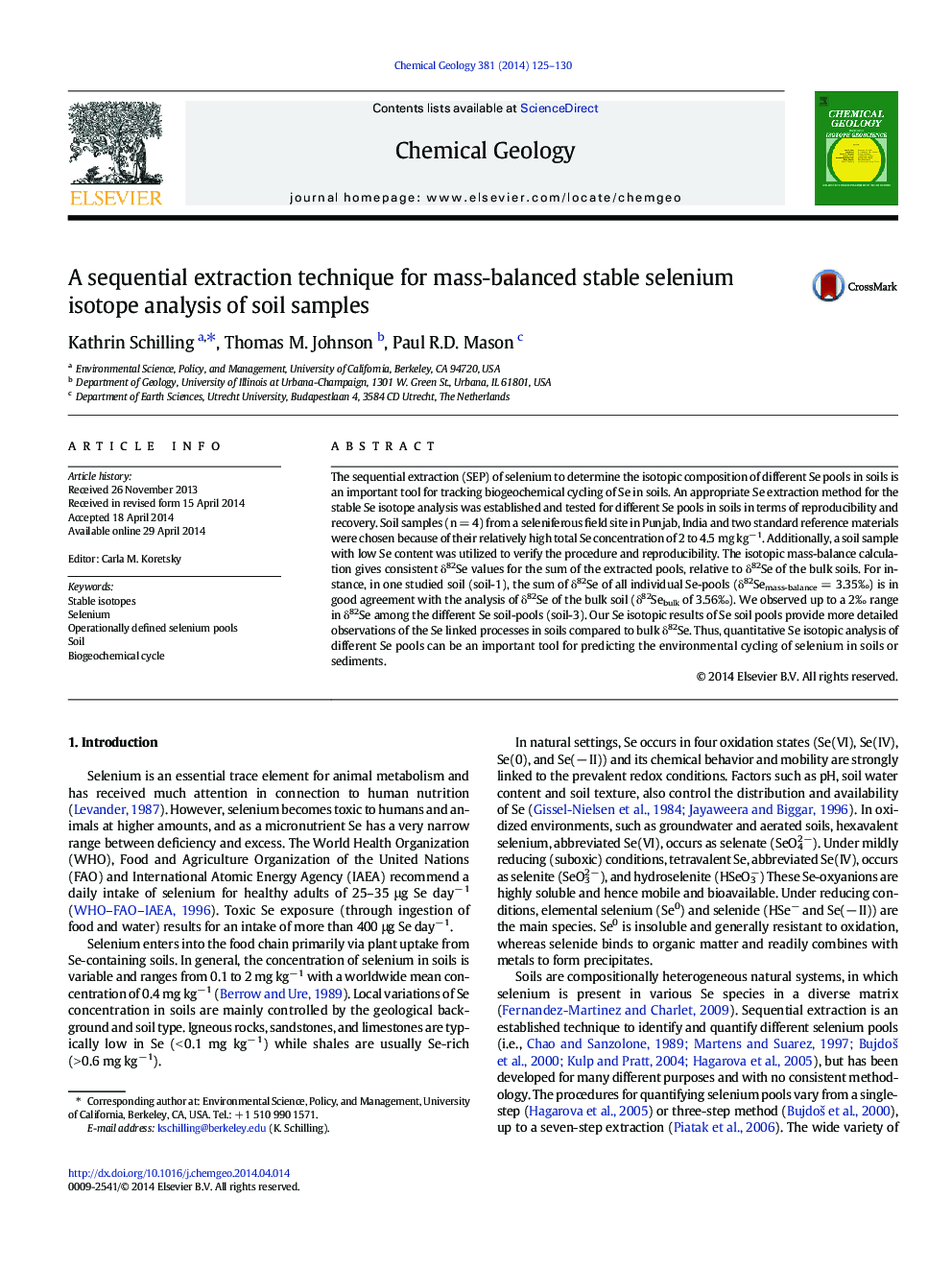| Article ID | Journal | Published Year | Pages | File Type |
|---|---|---|---|---|
| 6436606 | Chemical Geology | 2014 | 6 Pages |
â¢First isotopic mass-balance study for Se extracted from different Se pools in seleniferous soils and reference materialâ¢We observed significant Se isotope heterogeneity among the different Se soil pools.â¢Tracking Se linked processes in soils using stable Se isotopes
The sequential extraction (SEP) of selenium to determine the isotopic composition of different Se pools in soils is an important tool for tracking biogeochemical cycling of Se in soils. An appropriate Se extraction method for the stable Se isotope analysis was established and tested for different Se pools in soils in terms of reproducibility and recovery. Soil samples (n = 4) from a seleniferous field site in Punjab, India and two standard reference materials were chosen because of their relatively high total Se concentration of 2 to 4.5 mg kgâ 1. Additionally, a soil sample with low Se content was utilized to verify the procedure and reproducibility. The isotopic mass-balance calculation gives consistent δ82Se values for the sum of the extracted pools, relative to δ82Se of the bulk soils. For instance, in one studied soil (soil-1), the sum of δ82Se of all individual Se-pools (δ82Semass-balance = 3.35â°) is in good agreement with the analysis of δ82Se of the bulk soil (δ82Sebulk of 3.56â°). We observed up to a 2â° range in δ82Se among the different Se soil-pools (soil-3). Our Se isotopic results of Se soil pools provide more detailed observations of the Se linked processes in soils compared to bulk δ82Se. Thus, quantitative Se isotopic analysis of different Se pools can be an important tool for predicting the environmental cycling of selenium in soils or sediments.
